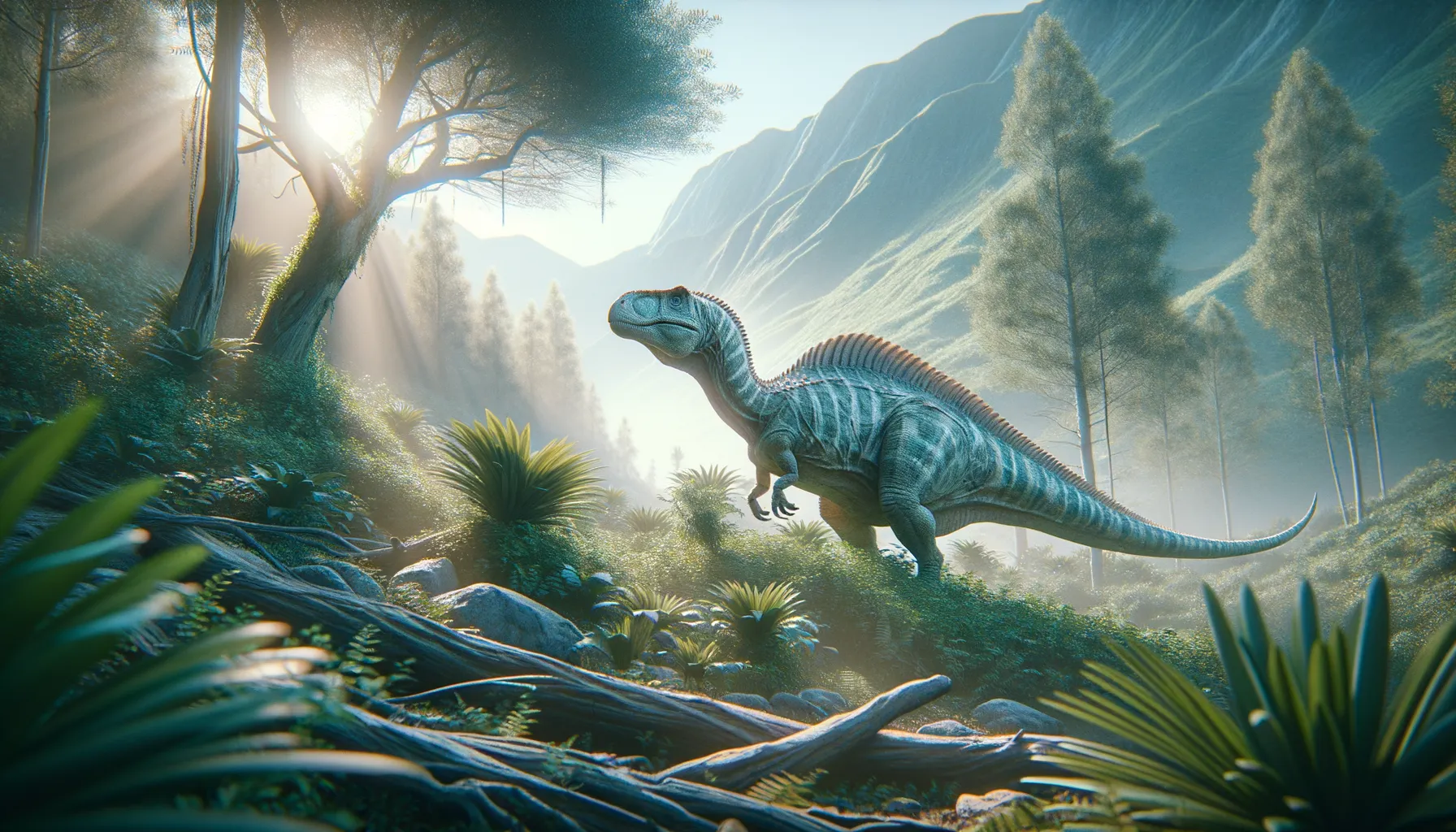
Propanoplosaurus
Armored protection on a small scale!
Period
Cretaceous
Length
Roughly 2 meters long.
Height
Approximately 1 meter at the shoulder.
Weight
About 150 kilograms.
Propanoplosaurus was a small, armored dinosaur that roamed the Earth during the Cretaceous period. Known for its plant-based diet, this dinosaur's fossils were first uncovered in the state of Maryland, USA. Despite its diminutive size, Propanoplosaurus showcased characteristic armor that likely served it well against potential predators. Insights into its embryonic development have provided valuable information about dinosaur growth patterns.
Diet
Propanoplosaurus was a herbivore, feasting primarily on low-lying plants and perhaps small shrubs. Its diet would have required it to forage frequently, given its size and energy needs.
Hunting
As a herbivore, Propanoplosaurus did not hunt. Instead, it would seek out patches of vegetation in its environment. Its slow pace meant it relied on nearby food sources.
Environmental challenges
Propanoplosaurus faced the challenge of finding enough food in environments where vegetation might have been sparse. Additionally, given its size, it needed to be wary of larger predators. Its armored body provided defense but might have restricted its mobility when escaping dangers. Environmental changes during the Cretaceous period would have also impacted the availability of its plant-based diet.
Speed
Slow-moving due to its heavy build.
Lifespan
Estimated to live up to 30 years.
First discovery
Discovered in 2005 in Maryland, USA.
Fun Facts
- Propanoplosaurus was a nodosaur, a type of armored dinosaur, which lived during the Early Cretaceous period.
- Unlike many dinosaurs that are known from adult specimens, Propanoplosaurus is known from a hatchling fossil.
- The fossil of Propanoplosaurus was found in Maryland, which shows that nodosaurs lived in what is now the eastern United States.
- This dinosaur was relatively small compared to some of its gigantic relatives and would have had bony armor for protection.
- Propanoplosaurus was a plant-eater, feeding on low-lying vegetation in its forested environment.
- The fossil was discovered in 1994 but was only described as a new species in 2011.
- Its name means 'Armored Dinosaur from Near Hunting Creek', referencing the location where it was found.
Growth and Development
Young Propanoplosaurus likely remained under parental protection until their armor developed enough to offer significant defense. As they grew, their armor became more robust, offering increased protection. Embryological studies show that their developmental stages were somewhat similar to modern reptiles, with gradual growth from hatchlings to mature individuals.
Habitat
Propanoplosaurus inhabited areas rich in plant life, such as forested regions with abundant ferns and cycads. It would have preferred environments that provided camouflage and ample food supply. These dinosaurs thrived in habitats with softer ground cover, allowing their short stature to benefit from ground-level foliage.
Interaction with other species
Propanoplosaurus likely lived alongside other herbivorous dinosaurs, often competing for the same food resources. Predatory dinosaurs in its environment posed threats, but its armor was a key defense mechanism. Social dynamics among Propanoplosaurus groups could have involved cooperation to find food and evade predators.
Natural lifespan
Propanoplosaurus could naturally live up to 30 years.
Reproduction
Propanoplosaurus reproduced by laying eggs, most likely in protected nests. Parental care may have been involved, ensuring young had a higher chance of survival. Fossil evidence of nests indicates it lived in colonies where offspring could be collectively safeguarded.
Social behaviour
Socially, Propanoplosaurus might have lived in small groups, offering each other protection. Group living could help with alerting members to nearby predators. Such social structures also supported collective foraging efforts.
Fossil locations
Fossils of Propanoplosaurus have been primarily found in Maryland, USA. The initial discovery site is significant for offering insights into its development. These fossils are among the few armored dinosaurs unearthed in this region, providing rare insights into the diversity of Cretaceous life in North America.
